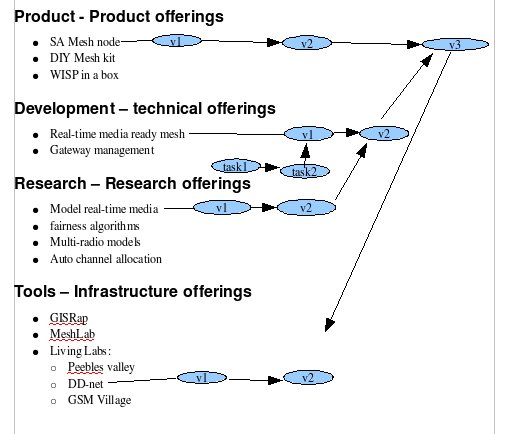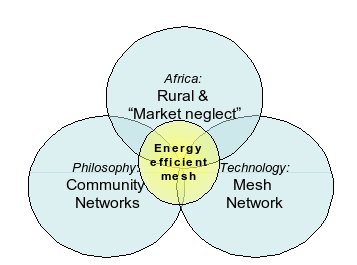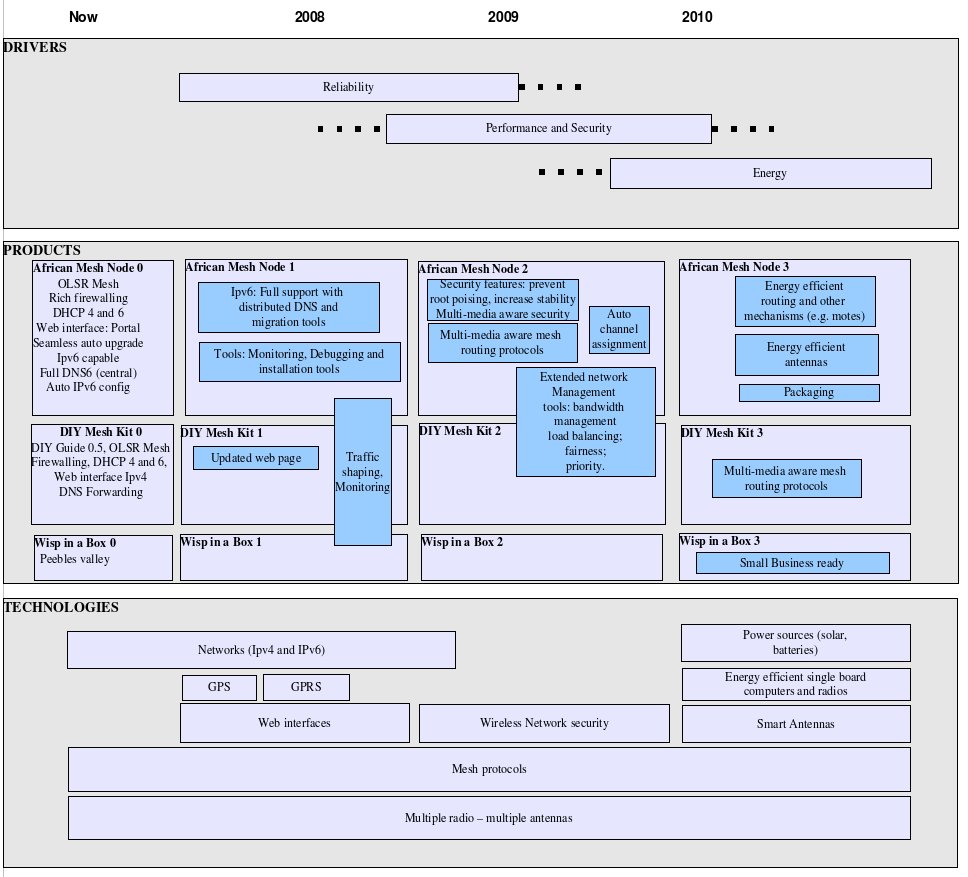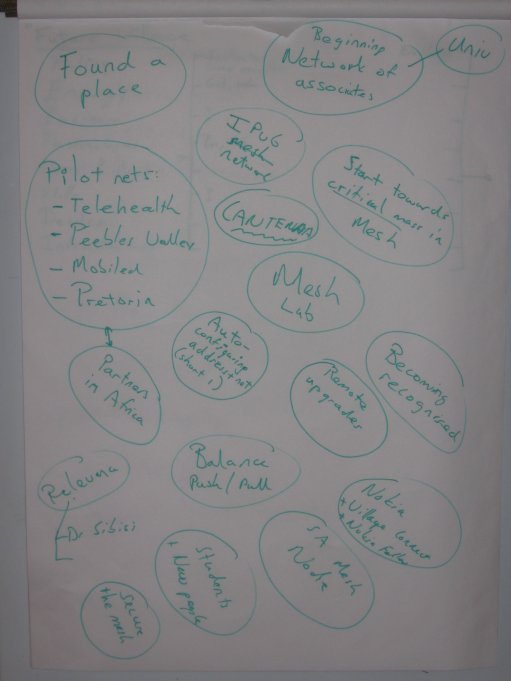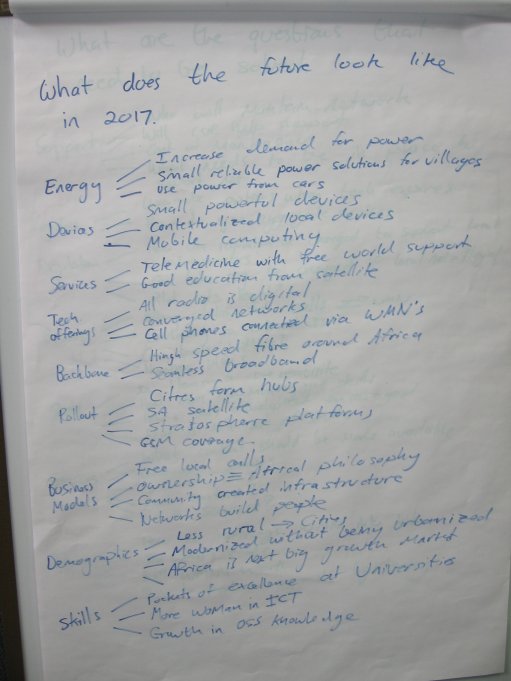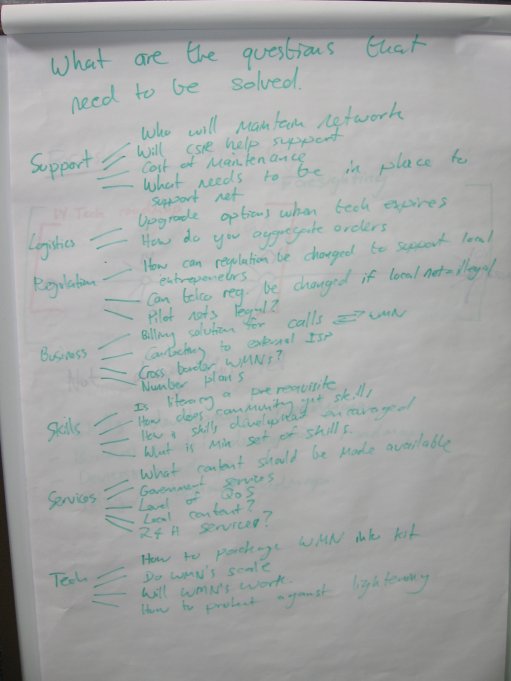Wireless Africa Roadmap
| We had better pay attention to our future, after all it's where we spend the rest of our lives - Albert Einstein |
The road mapping process
- Get synergy on what our product offerings are
- Define “feature sets” of various versions of product offerings within 3 year horizon
- Define Development and Research milestones to contribute to these feature sets
- Define linkages between, research milestones, development milestones and product offering versions
- Define a set of tasks to reach each of the above milestones
- Define what we will be doing this year
The roadmap structure that will be followed looks as follows
Focus is on a 3 year roadmap
These will be done at another stage
- Skills development roadmap
- Business model development roadmap
- Devices roadmap
- Policy development roadmap
- 10 year foresighting exercise
Our Philosophy and vision
| Vision: Make a significant contribution to connecting 450 million people sustainably in rural Africa through wireless mesh and other technology with a community grown philosophy
|
Our road map so far
Workshop 18th May 2007

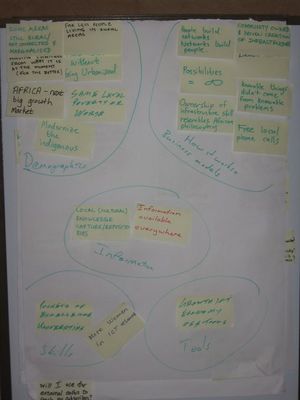
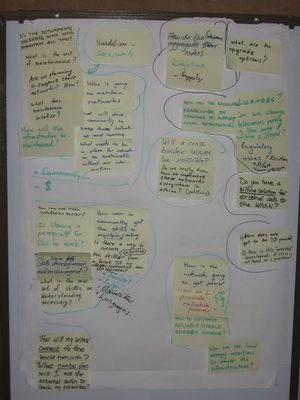
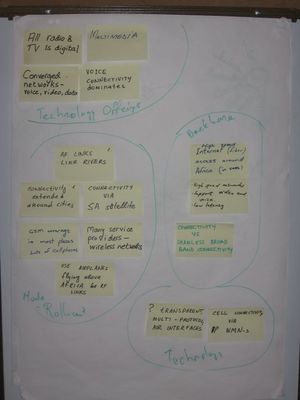
Thinking about what we have achieved
What could the future look like in 2017
What are the questions that need to be answered to connect 450M rural people to the internet
Workshop 8th of June 2007
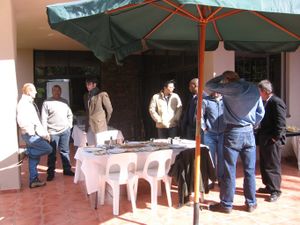
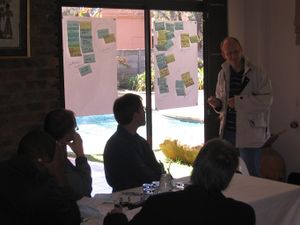
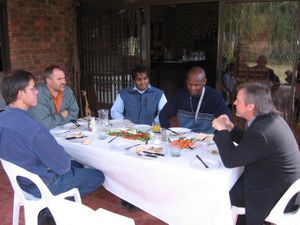
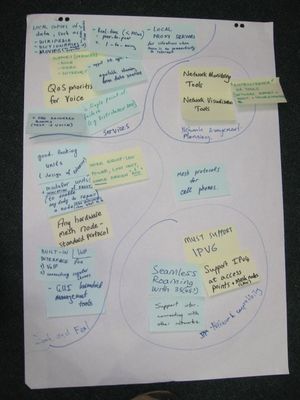
What are our Product Offerings
- Africa mesh node (Multi radio node with customized hardware and specialized firmware)
- Output = Blueprint design, firmware and manual
- Motto = “Mesh as easy to install as radio”
- DIY mesh kit (Low cost single radio node available off the shelf with specialized firmware)
- Output = Firmware and manual
- Motto = “They built a mesh using a download from our website”
- WISP in a box
- Output = Custom OS distribution and manual
- Motto = “I had a wireless business up and running in an hour thanks to WISP in a box”
Remember we will be contributing to these through partnerships with other people
How does the ideal mesh network look
- Network characteristics
- Auto/self config / minimal config required
- Scalable
- Adding nodes increases throughput
- Self healing
- Multi-hop communication
- Standardised mesh routing protocol
- Instant re-routing for VoIP
- Auto hierarchy forming (structured mesh)
- Load balancing protocol
- “intelligent network”
- Self regulating, i.e. (Load balancing, throttling etc)
- Media based network characteristics
- High throughput for video
- High bandwidth, low latency
- VoIP: minimised delay
- Internet: maximum speed
- Low latency for voice
- Energy efficiency
- Low energy consumption
- Load balancing for energy efficiency
- energy aware routing protocol
- Adaptive power usage
- self sustained (own power)
- Services
- Local copies data such as
- Wikipedia
- Dictionaries
- Movies (to make it popular) – even of free movies)
- Real-time (< 100ms)
- peer-to-peer
- 1-to-many
- Local proxy servers: for situation when there is no connectivity to the internet
- Support (services)
- voice
- video
- internet
- Qos priorities for voice
- support database applications
- equitable sharing from data sources
- No single point of failure (e.g. Distributed DNS)
- Pre-recorded books (text + voice)
- Local copies data such as
- Look and feel
- Good looking units (design of exterior)
- node equipment: low power, low cost, simple design “One-box”
- Modular units - indication of faults to enable anybody to repair a node (like photocopier show what to do)
- Any hardware mesh node – standard protocol
- Built-in interface for VoIP, connecting regular phones
- GUI management tools
- Network Management and planning
- Network monitoring tools
- Network Visualization tools
- “Intelligence” via tools (Network support, maintenance and troubleshooting)
- Network capability
- Must support Ipv6
- Support Ipv4 at access points + mesh nodes (LAN)
- Seamless roaming with 3G (4G)
- Support interconnectivity with other networks
- Node Hardware characteristics:
- Easy interfacing
- Easy to install
- Low-cost easy to support or fix
- Easily deployable
- reliable
- provide VoIP
- Easy to join
- Auto config auto update
- environment friendly (RoHS, ...)
- Must be fixable/ expandable by local community
- Environmentally robust/high reliability
- cheap mass production
- simple to build and expand
- Security
- Security is at the edges
- Users are protected from malicious attacks
